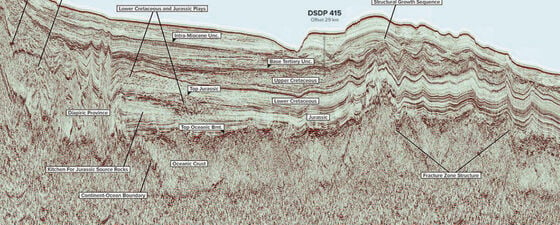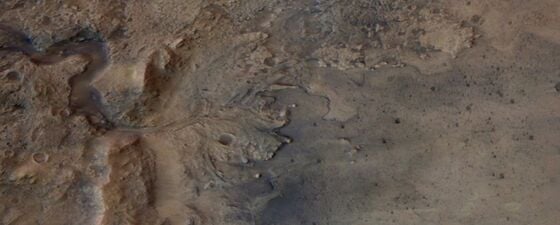Immersive, shared wrap-around sound and vision is ideal both for collaborative teamwork and for cost-effective safe training in the oil and gas industry.
The evolution of any new technological idea usually takes a tortuous path from its original concept – but not many tools in geoscience education and visualisation have as their starting point the desire of the inventors to get into music festivals for free! That was the original thinking in the minds of Colin Yellowley and Jamie Burrage about ten years ago, but having invented the ultimate shared party space they realised that it had a huge number of other applications and uses, including in the upstream geosciences.
© Igloo Vision Ltd.
Their product is a fully immersive, self-contained space, and to experience it is a bit like stepping into a huge Virtual Reality headset – but one that you can share with other people and where you can talk to them and walk around without being hampered by earphones or wires. It is an ideal discussion space for teams and has many uses for training and education.
Versatile Idea
The original space was a circular domed structure – hence the name Igloo – with immersive, wrap-around sound and vision, but the company have branched out to use a range of flexible shapes like tunnels to display a wide range of VR or 360° data. This can come from many different sources, including traditional visualisation data like photo galleries and standard videos, or 3D software integrations, apps and presentation screens and even live streams of video conferencing and gaming. It uses a flexible, scalable and easy-to-operate layer-based visualisation system, which takes in the data, distributes it via a series of ultra-high-definition channels and then re-combines them into one seamless 360° edge-blended projection.
© Igloo Vision Ltd.
There are three main ways in which the Igloo space is used. Because it immerses the viewer in a 3D situation it is ideal for training and education, from virtual field trips to familiarisation with a new technique or piece of machinery. There have been a number of applications to train health and safety operatives, safely and securely simulating life-threatening situations which will require rapid decision-making. A 3D visualisation is also a great way of bringing a new design to life or exploring different aspects of a structure like a proposed drilling rig, while wraparound sound and vision is able to engage, inspire and entertain by creating unforgettable events and experiences; some of the ‘igloos’ can hold up to 750 people.
Oil and Gas Collaboration and Training
Always keen to be at the forefront of technology, the oil and gas sector has been looking at the opportunities a shared visualisation technique like this can offer, particularly in the digital transition. In the upstream geosciences it has been used to envisage complex reservoir and subsea data in a manner that encourages discussion among teams, who are able to all look at the data together. It has also been used to integrate GIS, bathymetry and mapping data in order to plan drilling campaigns with real precision.
© Igloo Vision Ltd.
In the production arena, 3D visualisation in this format can be used to review and discuss designs for the installation of pipelines and instrumentation, to brief construction teams, to rehearse commissioning and start-up, and to simplify handovers. Another new technology, the use of drone photography, links well into this style of display. It can be used to brief maintenance teams and ensure that workers newly arriving at a rig or platform are already familiar with its layout.
An Igloo-style 3D display has uses right through into the decommissioning phase, as it can reduce the number of site visits to remote locations and allow for the visualisation of the reverse engineering techniques required for this work.
Supermajor BP has become quite a fan of 360° visualisation, having used it in a number of different scenarios, including investing in an Igloo system for immersive operator training at a major chemical processing plant in the UK. Using lidar scanning and a detailed texturing process, the plant has been digitally replicated to an extremely accurate level of detail and the system is used to safely simulate real-life situations, to immerse teams into potentially hazardous scenarios such as emergency shut-down procedures and to help in the development and training of field personnel. BP says that without this type of system the alternatives would either be technicians sitting around a table discussing how someone might or might not react in a given situation, or training them out in the field, which is not always safe or commercially viable.
While immersive spaces are not that new to the oil and gas industry, they have traditionally been very large, very expensive single-use systems – like a drilling simulator for example. Igloo, however, is much more affordable than the majority of immersive systems – typically about 5% to 10% of the price of legacy systems – but more importantly, because it enables the integration of a wide variety of existing content tools like Kairos, TSC, R2S, and Solibri, the same system can be used for several applications across the entire asset life cycle: visualising and interrogating reservoir data one day; conducting clash detection on P&IDs the next; before running H&S walk-throughs the following day,
Visualising the Future
This style of presentation is always a shared audio and visual experience. Teams can feel free to discuss or comment as they walk around and zoom into aspects of the 3D data, whether using geoscientific information like seismic, undertaking elaborate reservoir modelling or needing a 360° view of a tool or an installation. As we move forward with the digital transformation of the oil and gas industry, is this the future for collaborative teamwork and geoscience training?
Further Reading on the Digital Transformation of the Oil and Gas Industry
Digital Technology Trends in the Oil and Gas Industry
Dean Baker, RISC Advisory, RISC (UK) Limited
As companies look to increase efficiency, what are the key digital technologies that will shape the future of the oil and gas industry over the next decade?
This article appeared in July, 2019
Digital Transformation to Boost Oil and Gas Production
Patrick Meroney, Katalyst Data Management
In the upstream oil and gas industry, digital transformation is changing how companies do business. According to Booz Allen Hamilton (December 2018), digital transformation of E&P proprietary data could save the industry as much as $1 billion each year while boosting hydrocarbon production by up to 8%.
This article appeared in Vol. 16, No. 3 – 2019
Virtual Reality Geology Field Trips
Carol Hopkins; PetroEDGE
Bringing world-class geological field locations into the classroom using virtual reality technology.
This article appeared in Vol. 16, No. 1 – 2019




